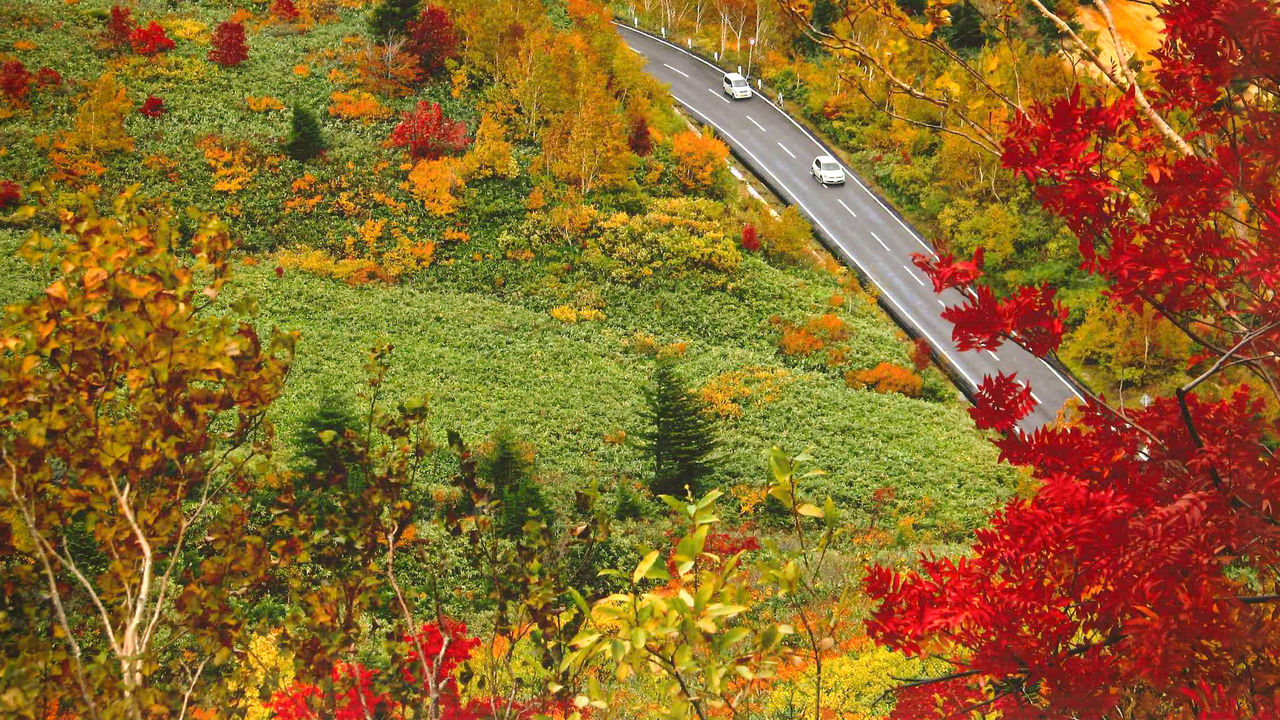
Fall Colors in the Far North: The Most Scenic Autumn Vistas in Tōhoku
Guideto Japan
- English
- 日本語
- 简体字
- 繁體字
- Français
- Español
- العربية
- Русский
Tsutanuma, Aomori Prefecture
Best viewing: mid- to late October
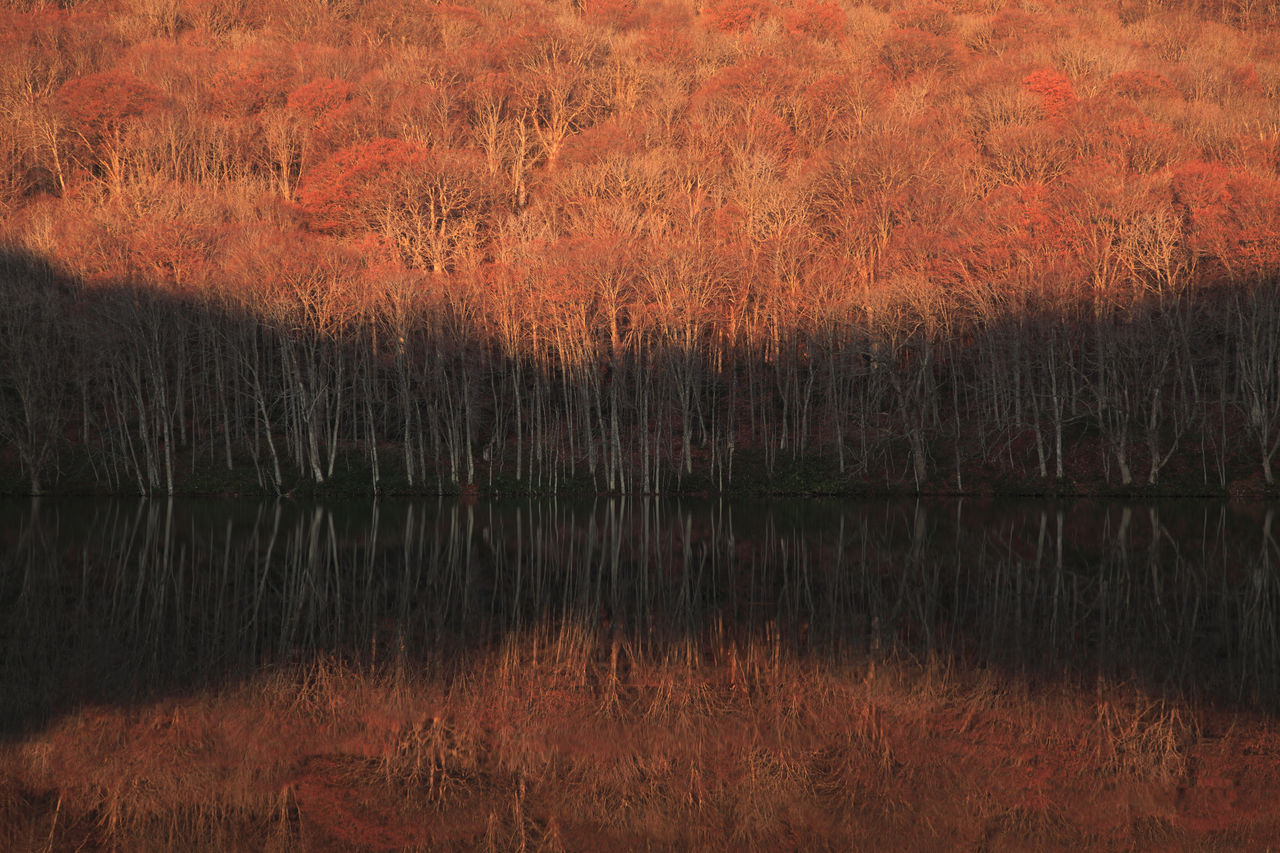 Autumn leaves mirrored in the waters of Tsutanuma marsh. (Photo courtesy of Towada City)
Autumn leaves mirrored in the waters of Tsutanuma marsh. (Photo courtesy of Towada City)
Deep in the primeval beech forest spreading around the base of Mount Hakkōda is the Tsutanuma marsh, with a full kilometer of shoreline. Every autumn, the turning leaves are reflected in the waters, turning the marsh bright red.
There are other marshes in the vicinity of Tsutanuma as well: Kagaminuma, Tsukinuma, Naganuma, Sugenuma, Hyōtan-numa, and Akanuma. A promenade called Numa-meguri-no-komichi allows visitors to walk among all but the last of these marshes and see nature up close. One can also hear the chirps of wild birds while walking around here. At this time of year, the cover of fallen leaves on the path is so deep that it looks like a red carpet.
Hakkōda Mountains (Aomori)
Best viewing: October
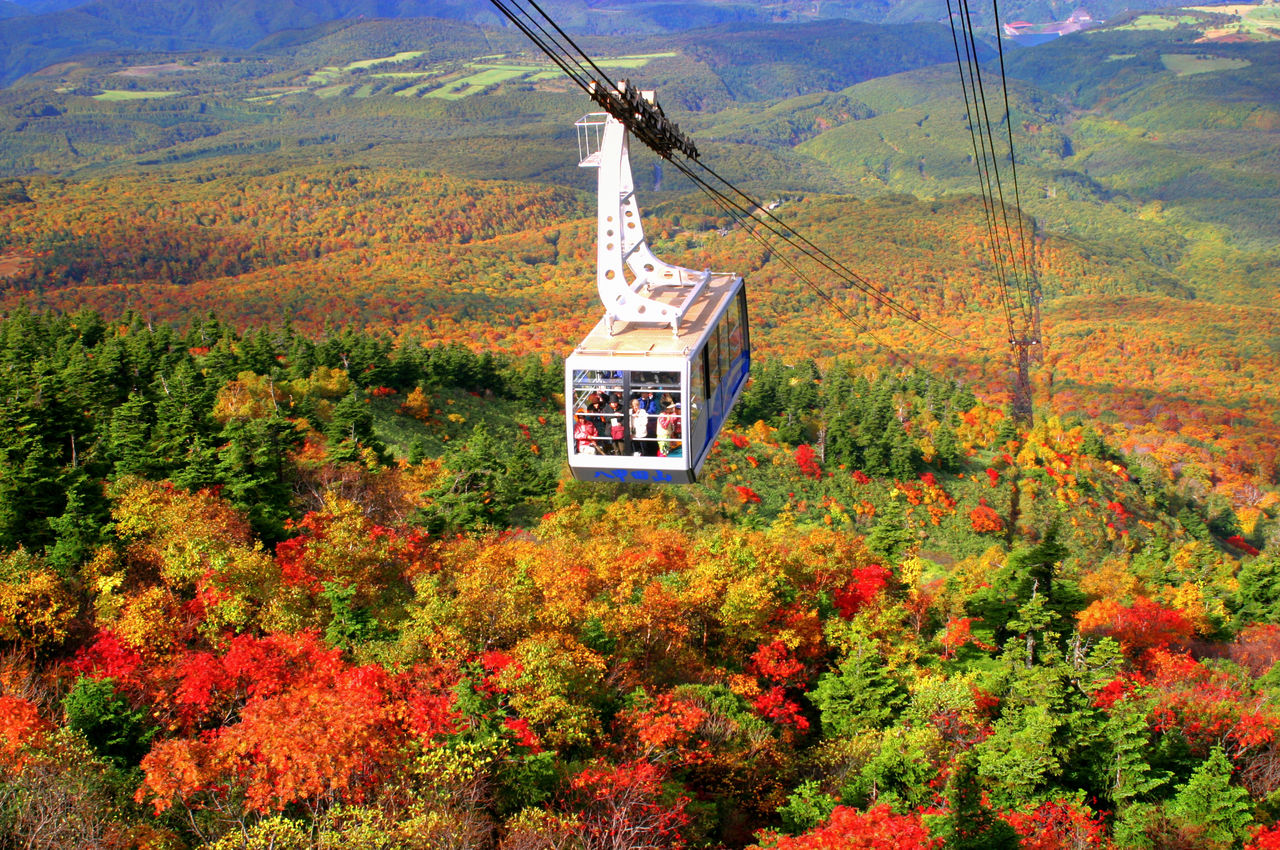 See the autumn leaves from the air. (Photo courtesy of Hakkōda Ropeway)
See the autumn leaves from the air. (Photo courtesy of Hakkōda Ropeway)
The Hakkōda Mountains are a range of some 10 volcanic peaks spreading out south of the city of Aomori. The vista of beech, birch, and maple trees turning these mountainsides red and yellow is truly a work of natural art.
Riding the ropeway affords an even more dynamic view of the turning of the leaves, this time from above. The trip also offers a 360-degree panoramic view extending to the Tsugaru Plains, Mutsu Gulf, and even Hokkaidō when the weather is clear. Sanchōkōen Station, 1,314 meters above sea level, marks the start and end of the Hakkōda Gourd Line, a promenade through the natural terrain where visitors can observe the colors on the mountains as they traverse the moors.
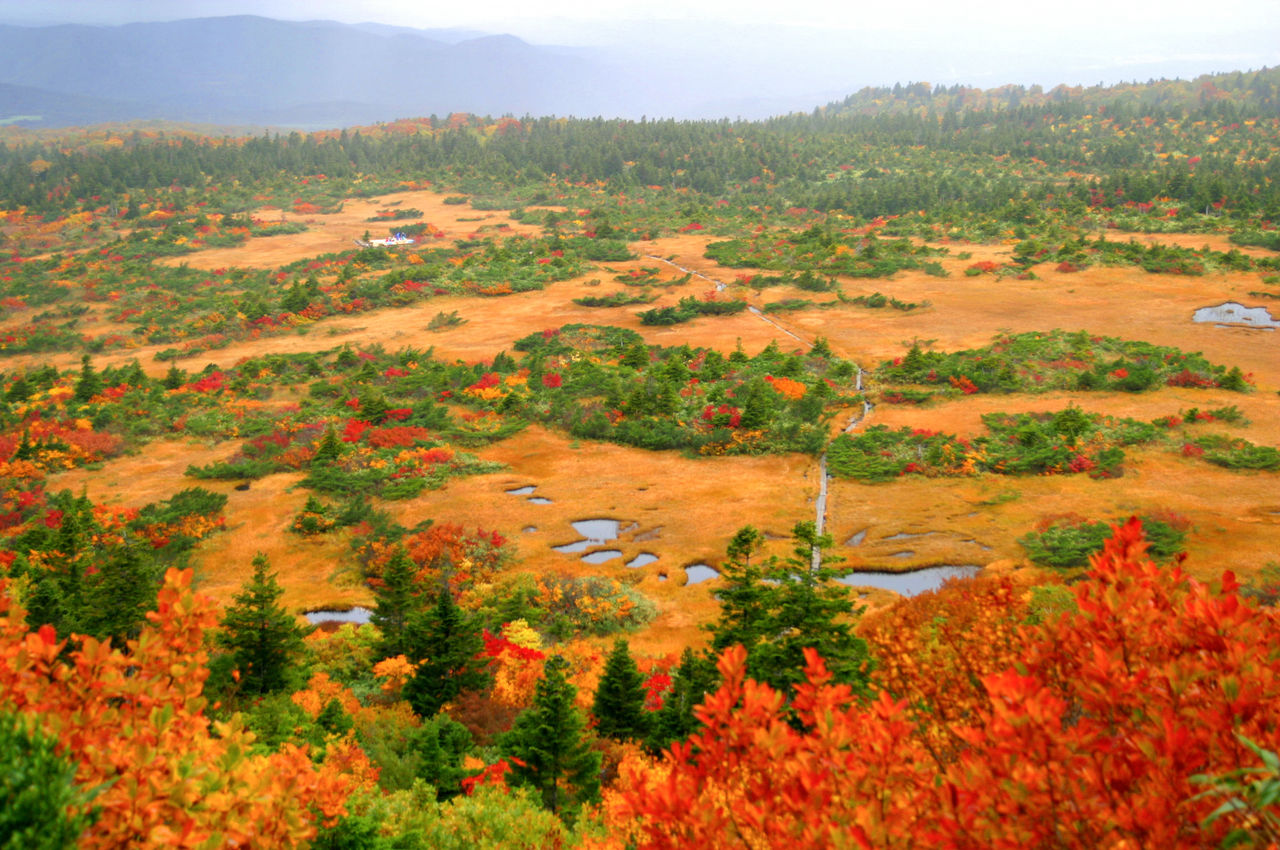 A walkway extends to the Kenashitai moors. (Photo courtesy of Hakkōda Ropeway)
A walkway extends to the Kenashitai moors. (Photo courtesy of Hakkōda Ropeway)
Dakigaeri Keikoku (Akita)
Best viewing: late October to early November
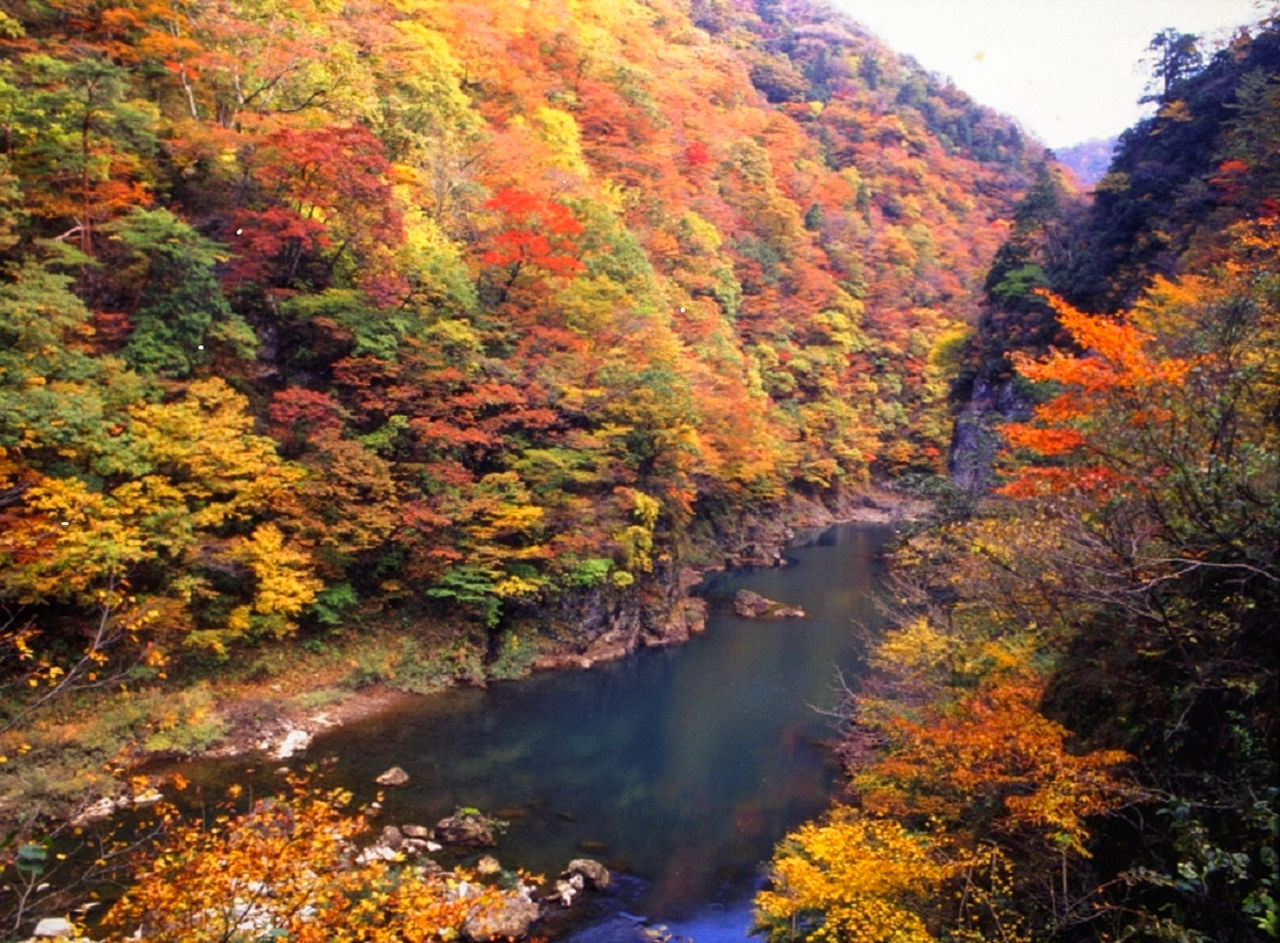 The clear water of the Tama River flows between bluffs covered in autumn leaves. (Photo courtesy of Senboku City tourism bureau)
The clear water of the Tama River flows between bluffs covered in autumn leaves. (Photo courtesy of Senboku City tourism bureau)
At Dakigaeri Keikoku, a valley in the city of Senboku, limpid blue water flows between sheer bluffs. This gorge extends for some 10 kilometers along the middle stretch of the Tama River. The area is particularly picturesque during the autumn when the leaves are turning, making it a popular destination at this time. The autumn leaves coloring the bluffs to either side of the gorge contrast strikingly with the pale blue surface of the water.
The best vista here is at Mikaeri Falls, a 30-minute walk from the entrance to the gorge. The sight is certain to make visitors stop and stare, combining as it does the beauty of a mountainside covered in red and yellow foliage with the power of water plunging 30 meters down that same mountainside.
Kakunodate (Akita)
Best viewing: late October to mid-November
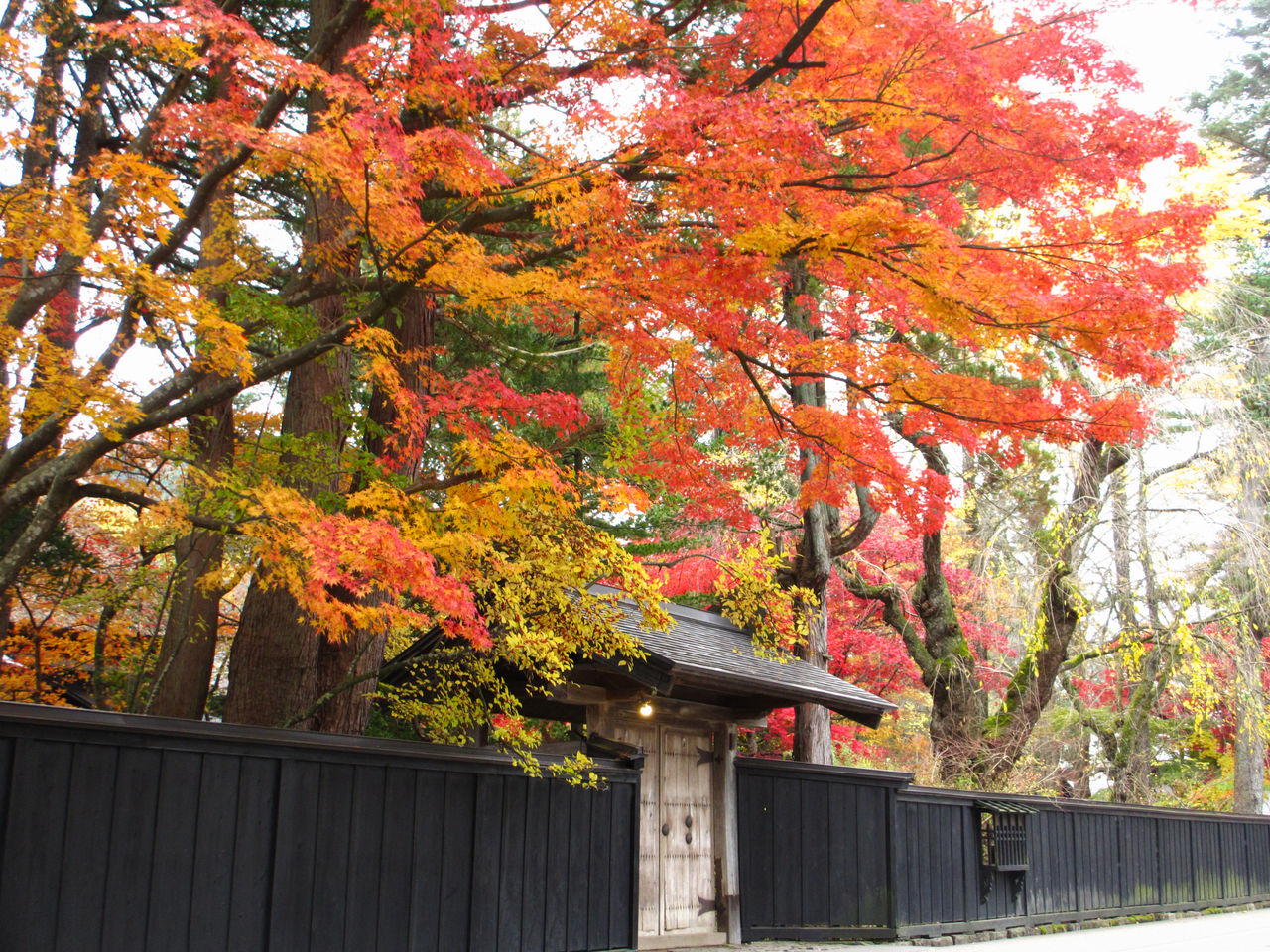 Autumn leaves set off the black board enclosure that is a hallmark of Kakunodate. (Photo courtesy of Kakunodate Tourist Association)
Autumn leaves set off the black board enclosure that is a hallmark of Kakunodate. (Photo courtesy of Kakunodate Tourist Association)
Kakunodate, also in Senboku, is the castle town of Satake-hokke, the northern branch of the Satake clan. Samurai residences have been kept here since the Edo period (1603–1868). The area is known for the black board enclosure surrounding these residences and the contrasting pink blossoms of the nearby cherry trees in springtime. It is also a striking sight in autumn, when the leaves of old maple and ginkgo trees in the area turn red and yellow. After savoring the gardens of the samurai residences open to the public, visitors can take rides in rickshaws around the castle town amid the autumn foliage. The streets are lit up at night, lending an additional sense of the fantastic to the autumn leaves after dark.
Hachimantai Aspite Line (Akita/Iwate)
Best viewing: Late September to mid-October
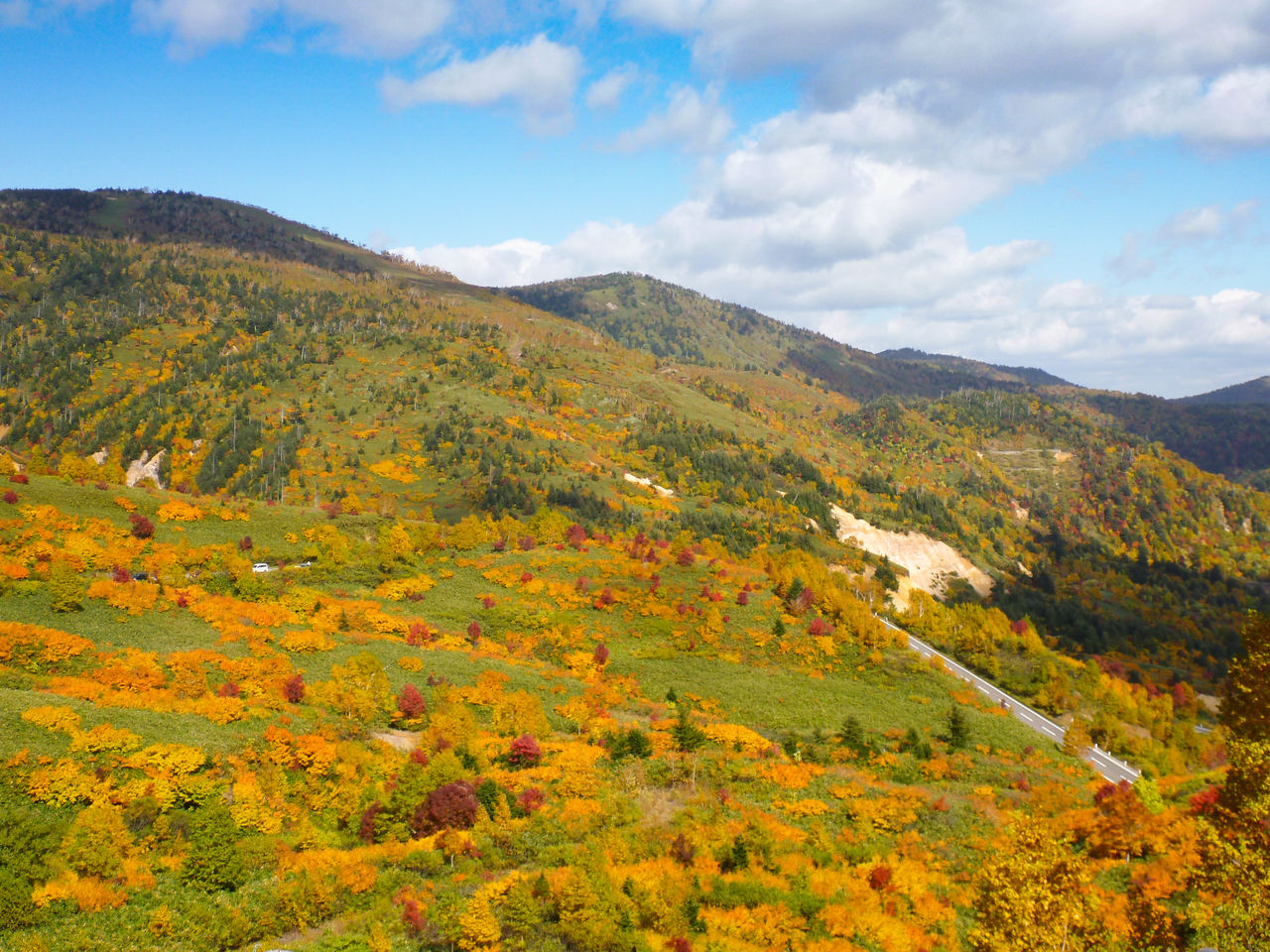 Erman’s birches in autumn decorate the green plateau. (Photo courtesy of Hachimantai Tourism Association)
Erman’s birches in autumn decorate the green plateau. (Photo courtesy of Hachimantai Tourism Association)
At some 27 kilometers in length, the Hachimantai Aspite Line is a spectacular driving road traversing the Hachimantai highlands between the city of Hachimantai in Iwate Prefecture and Kazuno in Akita Prefecture. As you drive through these mountains, which are covered in autumn colors and expansive, thick woods at this time, every curve reveals a new spectacle. The green Maries’ fir trees combine with the yellow and brown Erman’s birches to offer a series of breathtaking views. Another sight to see is the view of Mount Iwate from Mikaeri Pass on the Iwate-Akita border.
Mount Kurikoma (Akita/Iwate/Miyagi)
Best viewing : Late September to mid-October
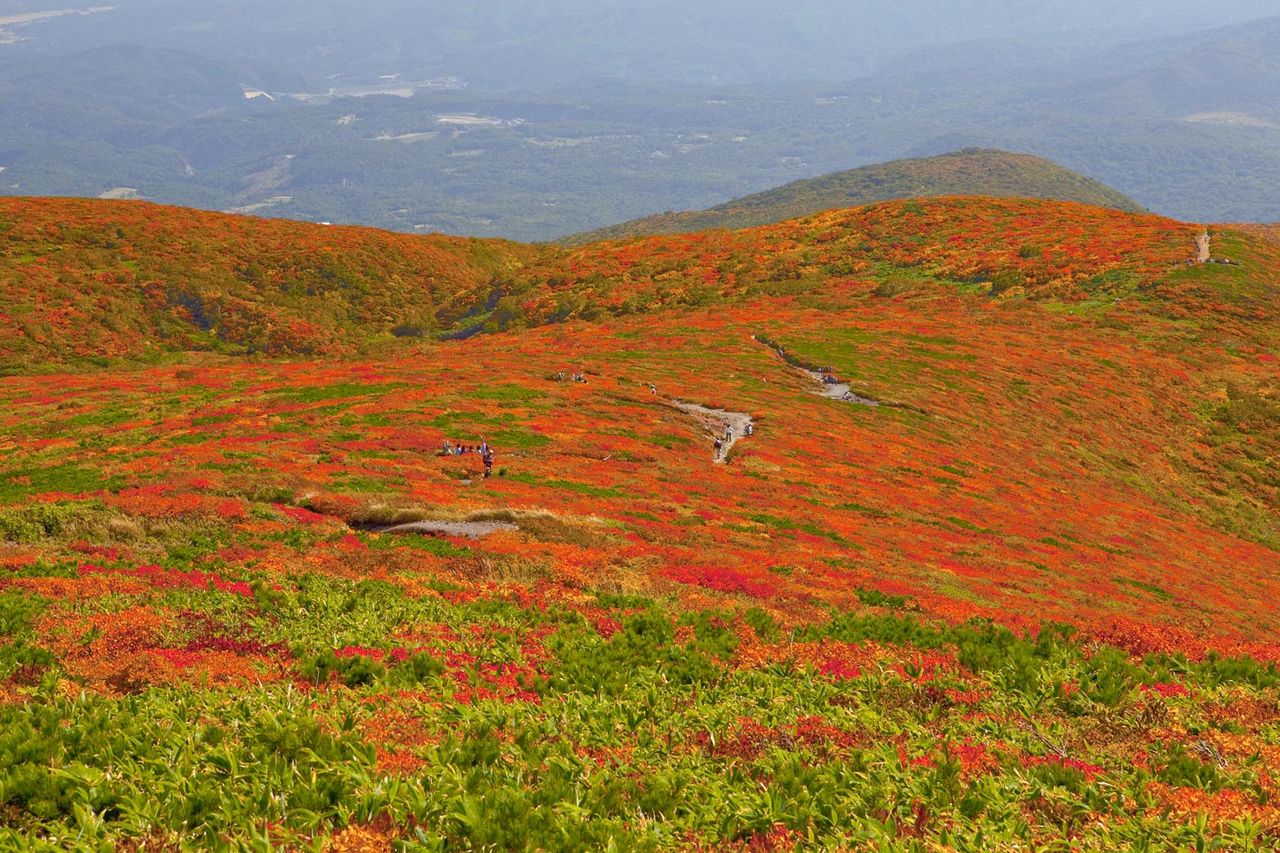 Autumn leaves cover the mountain like a carpet. (Photo courtesy of Kurihara City Tourism Section)
Autumn leaves cover the mountain like a carpet. (Photo courtesy of Kurihara City Tourism Section)
Mount Kurikoma sits nearly at the center of the Tōhoku region, spanning parts of Akita, Iwate, and Miyagi Prefectures. From its 1,626-meter summit, one can see all the way to the Pacific Ocean. The magnificence of this autumn vista, with the entire mountain being covered in gradations of red, orange, yellow, and green, has earned it the name of “Carpet of the Gods.” One reason for the luxurious range of autumn colors here is that many kinds of deciduous broad-leaved trees grow here naturally, including beech, Mongolian oak, and maple. Hikers can take a flagstone path from Iwakagamidaira, an area featuring parking and a rest house at the foot of the mountain, to the summit in about an hour and a half.
Sennin Pass (Iwate)
Best viewing: Late October to early November
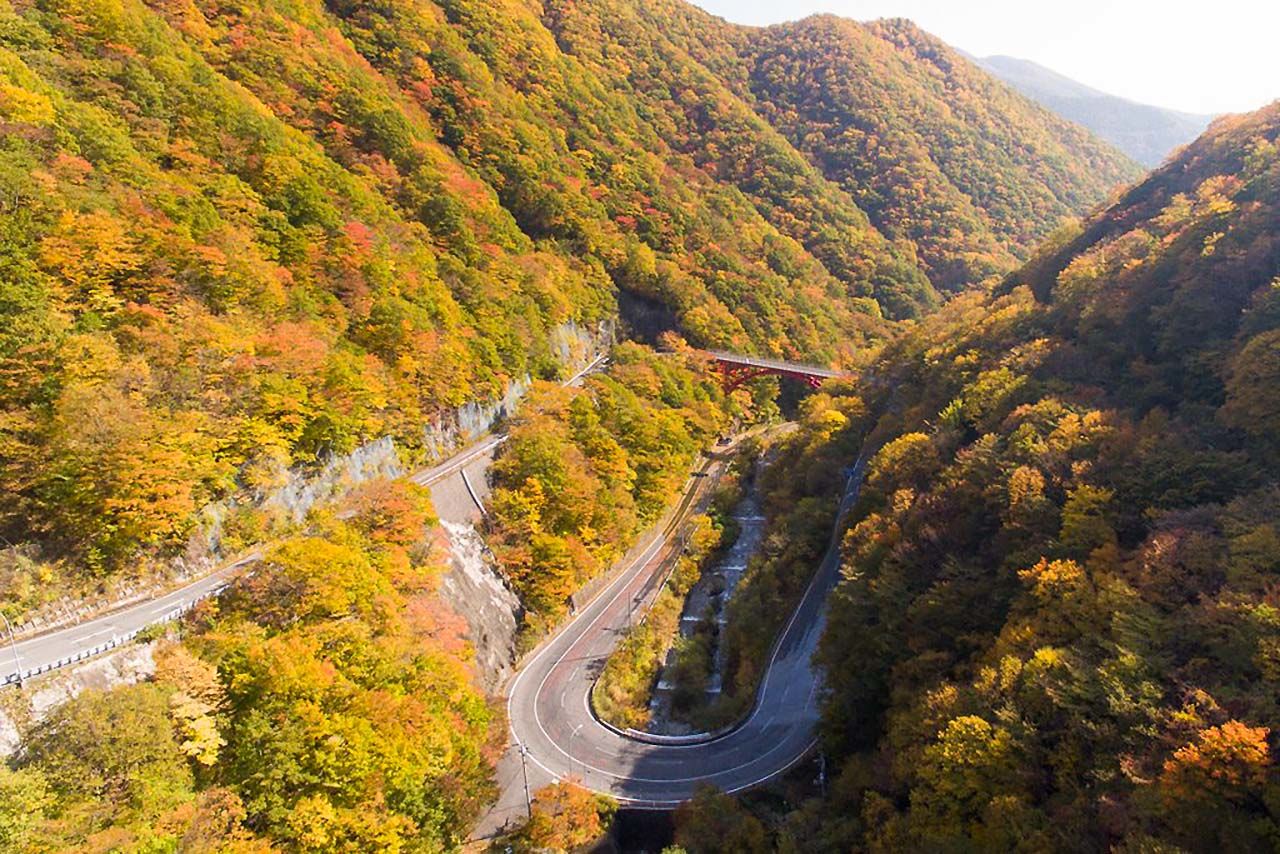 New autumnal vistas await around every curve. (Photo courtesy of Kamaishi Tourism Association)
New autumnal vistas await around every curve. (Photo courtesy of Kamaishi Tourism Association)
Sennin Pass lies between the cities of Kamaishi, near the sea, and Tōno, known in Japan as a birthplace of much folklore. While a new roadway has made it easier to get from one to the other at present, the old road is still popular during autumn. Of particular interest is the stretch from Sennin Ōhashi bridge to Sennin Tunnel, where foliage in luxuriant colors comes into view over and over as one drives the steep slopes and tight curves in this area. Take a drive through the autumn leaves here and feel your mind slip back to the old times in which the celebrated folklorist Yanagita Kunio set his Tōno monogatari, a collection of tales and legends from the region.
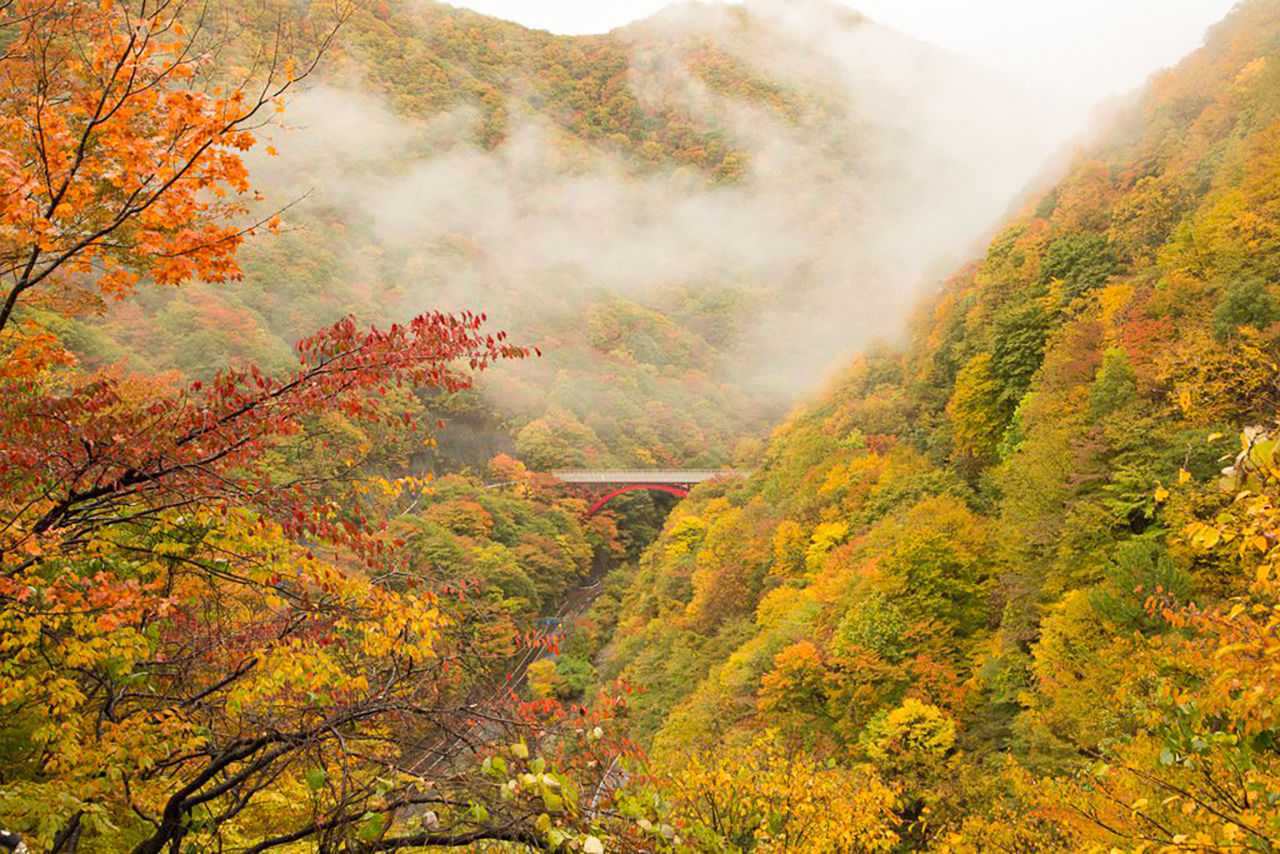 The bridge Sennin Ōhashi is shrouded in colorful trees. (Photo courtesy of Kamaishi Tourism Association)
The bridge Sennin Ōhashi is shrouded in colorful trees. (Photo courtesy of Kamaishi Tourism Association)
(Originally written in Japanese. Photographs and text by Shoepress. Banner photo: A view of the Hachimantai Aspite Line. Courtesy Hachimantai Promotion Team.)